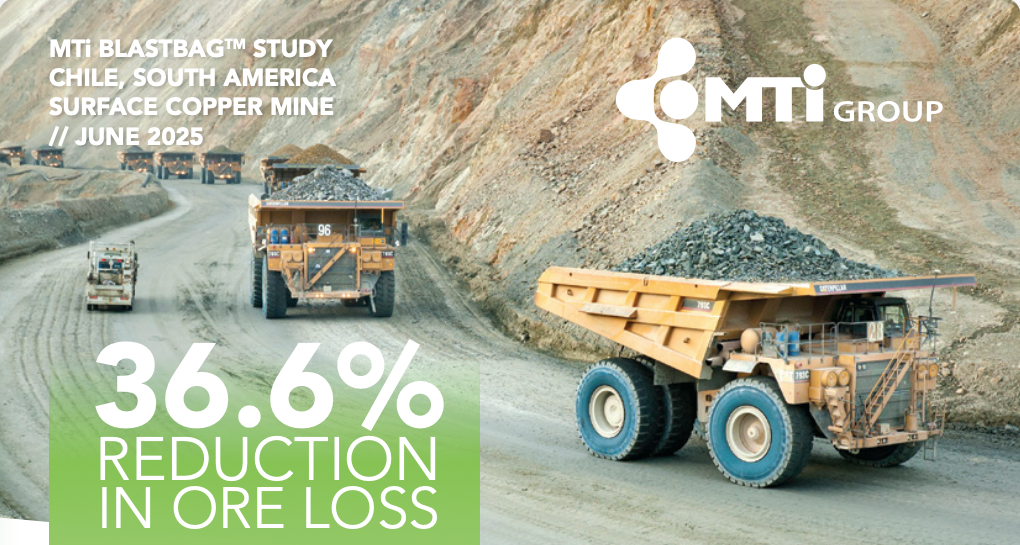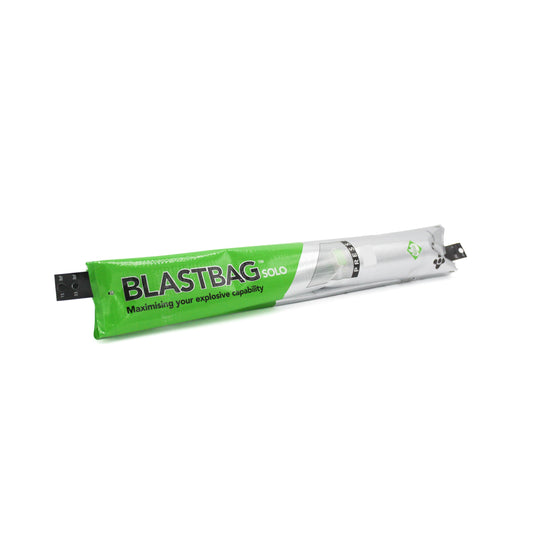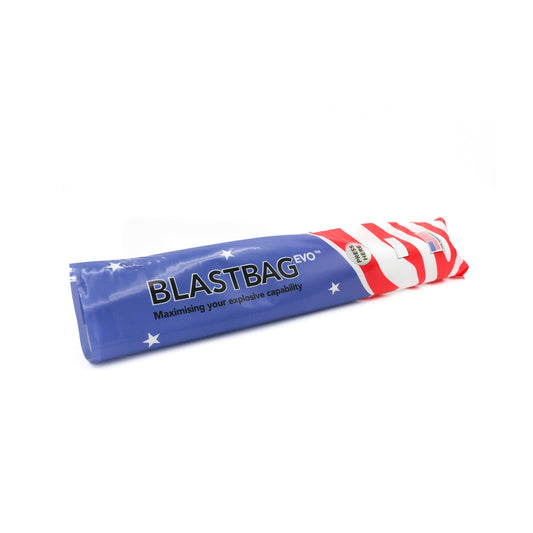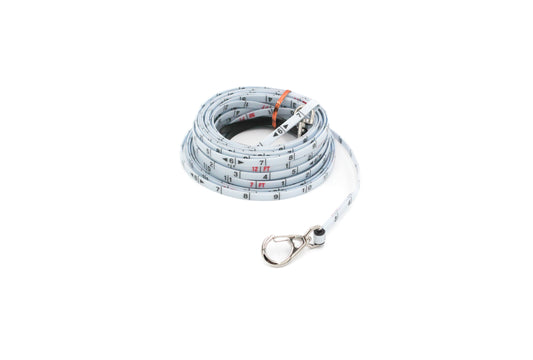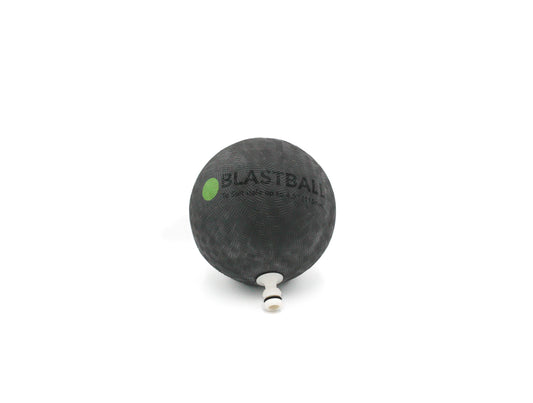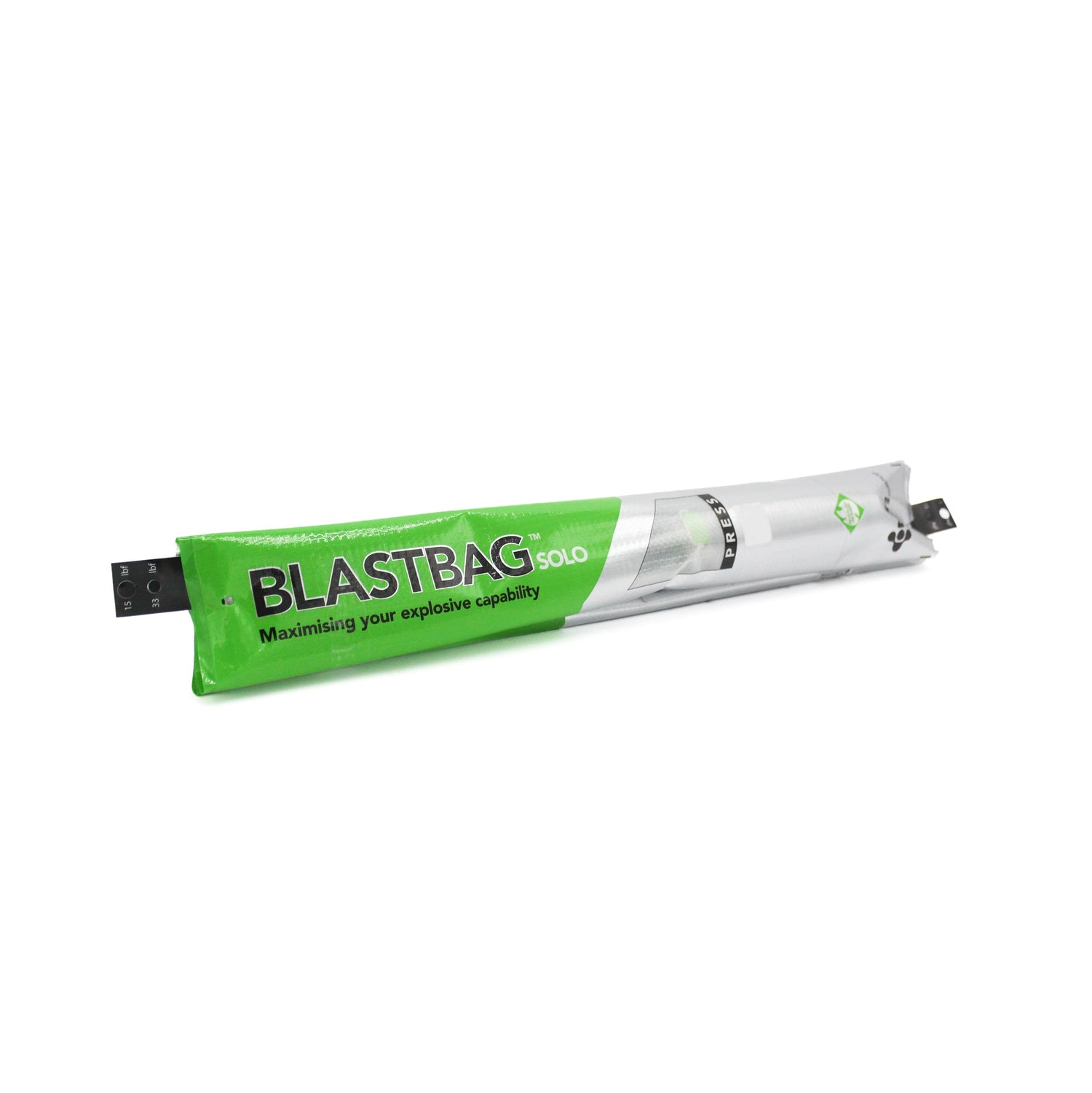MTi BLASTBAG™ STUDY
Chile, South America – Surface Copper Mine – June 2025
Key Result:
➡️ 36.6% Reduction in Ore Loss
Site Profile
-
Material: Copper
-
Bench height: 10.0 m
-
Stemming: 5.5 m
-
Burden: 7.0m
-
Spacing: 8.0 m
-
Hole diameter: 230mm
-
Explosive: Emulsion
Background
Ore loss and dilution in blasting occurs when muckpile displacement is too intense, when waste mixes with valuable ore, or when ore is sent to the bottom of the pit, making it hard to recover. This raises mining and processing costs and reduces recoverable ore—directly impacting profitability.
Factors include inaccuracies in the block model, complex orebody geometry, boundary uncertainties, or inefficient blast design .
The Challenge
This copper operation in the Andes produces over 400,000 tonnes annually and has operated for 100+ years. With very steep and narrow benches, ore loss is a major risk. Common issues included:
-
Muckpile movement – blasts often pushed ore to the pit bottom, blocking ramps and making recovery costly.
-
Ore loss – valuable ore mixing with waste and reducing grade delivered to the plant.
-
High drill & blast costs – pressure to reduce without hurting production .
A review found:
-
Limited control of muckpile displacement
-
Excessively long stemming, which over-confined the charge and wasted energy
The Solution
Working with Enaex’s EMTS team, an optimized blast design was developed using MTi BLASTBAG™ air decking.
-
Two buffer lines were tested with reduced powder factor.
-
Air decking redistributed energy, reducing heave and limiting unwanted movement.
Trial Setup
Blasts were analyzed using:
Results
-
Ore Loss: In Zone A, 1,297 m³ was lost vs 2,046 m³ in Zone B → 36.6% reduction.
-
Fragmentation: Improved with air decks.
-
Powder Factor: Reduced from 260 PF to 235 PF → 9.7% reduction.
-
Operational: No blocked ramps or excessive spillage in optimized blasts .
Conclusion
This trial showed that air decking with MTi BLASTBAG™:
-
Prevents ore loss
-
Improves fragmentation
-
Cuts powder factor
-
Reduces costs
It provided the operation with better control, higher ore recovery, and less dilution .
About MTi Group
MTi Group is a global leader in drill and blast consumables, blasting optimization, and blast control solutions. For over 25 years, mining operations worldwide have trusted MTi to deliver safer, more efficient, and more profitable results. From our patented BLASTBAG™ air decking technology to world-class stemming plugs, blast control accessories, and blast monitoring tools, we help customers reduce ore loss, improve fragmentation, and lower costs.
With operations across Australia, Africa, the Americas, and Asia, MTi Group is dedicated to optimal blasting every time.
